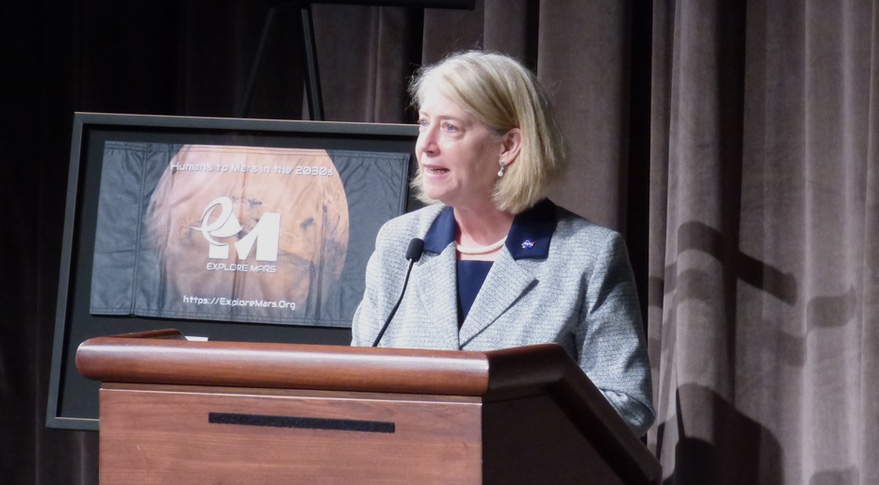WASHINGTON — NASA is seeking informal public input on a set of 50 objectives for its exploration efforts that agency leadership says will go into a broader effort to guide its activities for the next two decades.
NASA released May 17 a set of high-level objectives for its lunar and Mars exploration campaign. The agency also announced it was soliciting input on those objectives through its website until May 31.
The 50 objectives, each just a sentence long, fall in four categories: transportation and habitation, lunar and Martian infrastructure, operations and science. Examples range from “develop cislunar systems that crew can routinely operate to lunar orbit and lunar surface for extended durations” to “develop and demonstrate entry, descent, and landing (EDL) systems capable of delivering crew and large cargo to the Martian surface.”
NASA is eschewing a traditional request for information (RFI) approach for this effort, but said in its announcement that it follow up on the feedback with “stakeholder worships.” One, in June, will include domestic industry and academia, while a second, in July, will involve international organizations.
“They’re going to act for us as the guideposts over the next two decades and the individual programs and projects and technologies advance, come on line and work together,” NASA Deputy Administrator Pam Melroy said of those objectives in a May 17 speech at the Humans to Mars Summit. “They’ll help ensure that the things that we’re doing are integrated and that we are focused on Mars as a target.”
The feedback on the objectives, she added, is not linked to a procurement activity, hence the lack of a formal RFI. “It’s really building a consensus about what the things we need to demonstrate, develop and achieve,” she said.
The release of the list of objectives appeared for many in the space community to come out of the blue, but is part of a broader effort within NASA to develop a long-term strategy for human space exploration as an alternative to the “roller-coaster ride” of changing goals and approaches that started with the Space Exploration Initiative in 1989, said Kurt (Spuds) Vogel, director of space architectures at NASA, in a 35-minute video released by the agency May 17.
NASA, he said, wants to move from a “capabilities-based approach” it’s used for more than a decade, where advances are based on what resources are available. “That can be an OK approach, except that it’s not going to be moving out with purpose and it doesn’t fully support a long-term strategy,” he said. The agency instead is looking to shift to an objectives-based approach.
The ultimate objective, he said, is to create a blueprint for sustained human presence and exploration throughout the solar system. The set of 50 objectives support that goal to support human missions to the moon and initial human missions to Mars.
The feedback on the objectives will refine them and support a gap analysis, comparing them with existing programs. “The reality is that there is going to be some disconnects,” he said, including objectives not supported by any existing efforts. “In that case, we need to start something.”
There’s also the opposite case, he said, of efforts that don’t appear to support any objectives. “Is that an effort we shouldn’t be doing, or is that effort really for something that we should be doing, but not for this program?” he said. “Or, are we missing an objective?”
That gap analysis, he said, would take place later this year after ongoing refinements of the exploration architecture.
